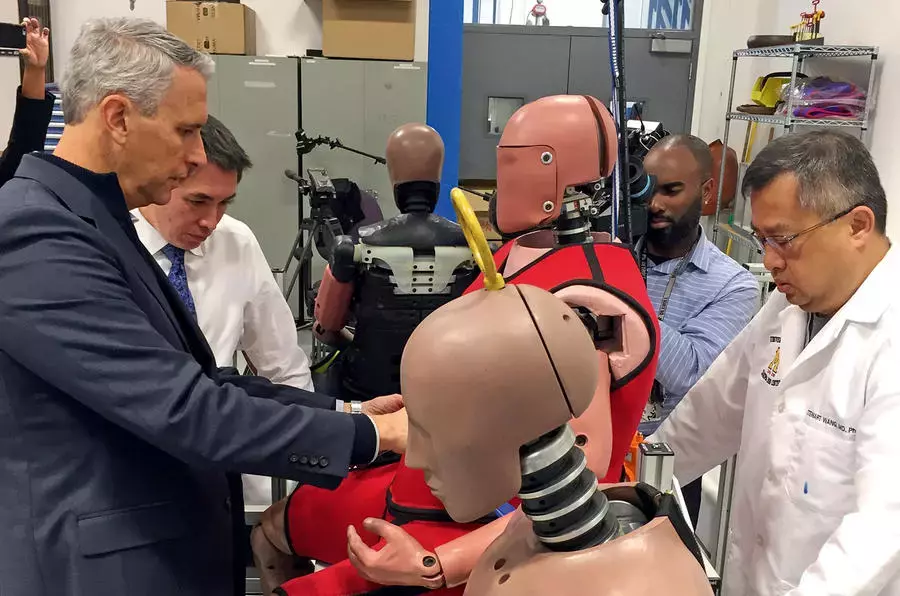Doctors and engineers are beginning to understand the role of body fat in a car crash, and sadly the extra padding does nothing to reduce the impact. One of the consequences is caused by additional milliseconds it takes before seat belt restraint devices “take hold” on the body. With more rigid body types, the seat belt takes hold on the body immediately reducing the acceleration and resulting shock.
In safety terms, these milliseconds increase risk to injury by as much as 10% according to NHTSA, so they are VERY significant. You might have noticed some cars use the pretensioner system which is designed to reduce injury risk. The pretensioner mechanism uses an explosive charge to drive a concealed piston when sensors detect the signature abrupt deceleration of an accident. This extra seatbelt "pre-" tension, moments prior to the full force of impact, pulls the bodies of the driver and front-seat passenger firmly into their seats.
We are also developing more sophisticated dummies that can better replicate the reality of the 75% of US drivers that are technically overweight or obese. In everyday speak, that's those of us that have baby fat, slight rolls, love handles or "strongman's belly".

Our obese dummy (or slightly overweight according to BMI)... help engineers replicate how fat and flesh affect conventional safety features that are designed for "solid / taught" bodies. Crash test engineers know through tests with a cadavers that bodies with BMI above 30 suffer unexpected impacts during a crash: the seat belt digs into the abdomen; the body is thrust forward off the front edge of the seat; obese people suffer severe ankle fractures that caused by the mass moving forward on the lower leg, which can increase the risk of immediate death through bleeding, or secondary causes through prolonged hospitalization,, immobility pneumonia.
In the dummies we're developing to represent women who have a different BMI and muscle: fat ratio. Women's force deflection characteristics are different to mens'. Women are more vulnerable because in higher speed and severe impact accidents, their soft tissue can move 2-3 cm more before safety features start to kick-in.
Mike Beebe
Mike is a Chief Technology Officer for Humanetics Safety. He has spent over 40 years in the design, development, manufacturing, and testing of Anthropomorphic Test Devices (ATD’s or crash dummies). Mike has worked with almost all of the historical dummy manufacturers (ARL, Humanoid Systems, FTSS, ASTC, & Denton ATD), the NHTSA, Chrysler, and GM, and helped develop the SID, Hybrid III family, BIOSID, BIORID, the Live Fire Lifeman, airman, and ejection seat dummies.